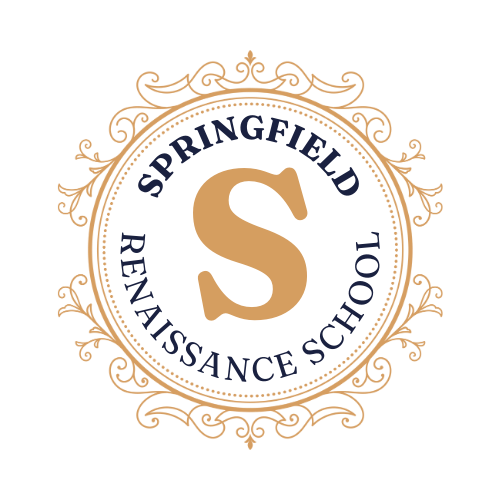
Share Post:
A personal statement serves as a vital supplement to your college application. Admissions officers use it to evaluate motivation, character, and writing style. It offers space to highlight values, passions, and the kind of energy you would bring to a college community.
Most applicants use it when applying through the Common App or other college-specific platforms. If you have a recommendation letter, using a personal statement as well will make your application more eye-catching!
Some schools provide exact prompts, while others leave the format more open, allowing for creative freedom.
Table of Contents
TogglePreparing to Write
Before writing a personal statement, preparation makes a lasting difference. Rushed work lacks coherence. A well-prepared draft reflects introspection and intentionality.
Start by reflecting on motivations, strengths, and goals. Then, move into focused research that guides the writing direction.

Self-Reflection Prompts
Meaningful writing comes from clarity of purpose. Begin by asking yourself direct questions.
These questions will help you identify the core reasons for applying and uncover stories that reveal your values.
- Why pursue this specific course of study?
- What aspects of the subject bring excitement or curiosity?
- Which academic interests and long-term goals motivate you most?
- What experiences demonstrate perseverance, growth, or leadership?
- Which personal values influence your choices?
- Who or what inspired your interest in the field?
- Are there moments in your life that changed your academic focus or personal drive?
Digging into these questions can bring up compelling experiences. It might be an afternoon spent helping a sibling learn math, a summer program that unlocked an interest in engineering, or a family tradition that inspired you to pursue medicine.
Also, look at your values and where they show up in your everyday behavior. Academic drive, kindness, resilience, or curiosity, these traits often emerge long before we notice them. Pinpoint how those values surfaced in your actions.
Research
Strong statements align personal values with the institution’s goals. That connection begins with research.
Instead of writing broadly, focus on specific details related to the schools and programs on your list.
- What does this program emphasize academically?
- Are there faculty members with projects that match your interests?
- What qualities does the school mention in its mission or admissions priorities?
- Are there clubs, organizations, or outreach programs that relate to your values?
- What distinguishes the academic or social environment of the school?
Research helps you match your story with what the school offers. Knowing those touchpoints allows you to write with intent and clarity.
Structuring Your Personal Statement

After reflection and research, organize ideas into a structure that flows naturally. A strong personal statement doesn’t list achievements. It tells a story, one that progresses with purpose and keeps the reader engaged.
This section outlines a logical way to structure the personal statement, starting with the opening paragraph and ending with a conclusion that leaves an impression.
Opening Paragraph – The Hook
First impressions matter. A personal statement should begin with a line or scene that captures attention. Avoid vague declarations or broad generalizations. Start with a vivid moment, a memory, or a line that reflects your voice.
- Begin with a question that leads to self-discovery.
- Use a brief but compelling anecdote that introduces your interest.
- Mention an unexpected connection between two areas of your life.
- Describe a moment of clarity related to your chosen field.
Avoid lines like “ever since I was young” or generic phrases that sound rehearsed. Write something fresh. The opening sets the tone and helps the reader see your personality.
Middle Paragraphs – The Core Story

The body of the personal statement should unfold naturally. These paragraphs carry the most weight. Organize them into clear themes that allow readers to see your academic interest, extracurricular engagement, and growth.
Each subsection below introduces a theme to develop.
| Section | Purpose | Examples and Ideas | Key Action |
|---|---|---|---|
| Academic Interests | Show how interest in the subject developed | Mention a class, project, teacher, or book that sparked curiosity. | Explain how your interest became a clear goal. |
| Experiences & Extracurriculars | Highlight impactful activities | Share key leadership, volunteer, job, or teamwork experiences. | Describe what you did and what you learned. |
| Skills & Qualities | Show traits through real examples | Focus on problem-solving, communication, creativity, adaptability, or initiative. | Connect traits to specific outcomes. |
| Personal Growth | Show maturity through challenges | Discuss academic setbacks, life transitions, or changed goals. | Reflect on how you grew and what shifted for you. |
| Contribution to Campus | Show what you bring to the college | Talk about passions, clubs, insights, or goals that align with campus life. | Link your strengths to what the school values. |
Final Paragraph – The Conclusion
Every strong piece of writing ends with a purpose. The conclusion ties together major points and leaves the reader with something memorable.
- Circle back to the anecdote or thought introduced in the hook
- Emphasize the evolution of your interest and goals
- Restate your enthusiasm for the course and school in a fresh way
- End with a forward-facing thought, a goal, an aspiration, or a statement of intent
Let the conclusion feel earned. It should not introduce new topics but bring your narrative full circle.
Writing Style and Voice
Writing style reflects more than just grammar; it reveals personality, authenticity, and clarity.
A compelling personal statement reads like a conversation with someone thoughtful and self-aware. It avoids robotic formality while also maintaining a respectful, academic tone.
Think of your voice as your fingerprint on the essay. Authentic writing stands out because it feels honest, not rehearsed or inflated. Use the same tone you might adopt when speaking to a trusted teacher about your goals.
- Write like you speak to a respected adult, not like a speechwriter or a thesaurus. Your real tone matters more than big words.
- Use storytelling over lists. Avoid turning your essay into a resume. Transform facts into narratives that engage and explain.
- Be specific in every example. Instead of saying “I enjoy helping others,” describe a moment when you tutored someone who was struggling and how you adapted your approach.
- Balance professionalism with honesty. Enthusiasm, drive, and vulnerability can all exist in one piece of writing. Don’t try to sound flawless, focus on being real.
- Show maturity without arrogance. Confidence works best when paired with reflection and gratitude.
Statements that feel forced, exaggerated, or disconnected from the applicant’s real experience are easy to spot. The most effective writing is grounded in truth and detail.
Editing and Polishing
A strong draft rarely appears on the first try. Writing a personal statement is a process.
Initial drafts help shape ideas, but revision brings clarity, coherence, and strength. Writers improve through multiple passes, honest feedback, and close attention to structure and tone.
Think of editing as sculpting: the more you chip away, the clearer the final shape becomes.
Start with broad structure, then move to word choices, rhythm, and grammar.

Follow this step-by-step editing process:
| Stage | Focus | Actions | Considerations |
|---|---|---|---|
| First Draft | Generating ideas and capturing motivation | Get ideas down without worrying about grammar or structure. Capture raw stories and emotion. | Write more than needed; easier to trim than to expand later. |
| Peer Review | Getting outside perspective | Share with someone familiar with your writing style, like a teacher or mentor. | Limit the number of reviewers to avoid conflicting advice. |
| Revision | Refining content and structure | Rearrange paragraphs, eliminate repetition, and strengthen transitions. | Focus on clarity, tone, and keeping your voice consistent. |
| Proofreading | Polishing language and correcting errors | Read aloud to identify awkward phrasing. Fix grammar, punctuation, and spelling. | Ensure character or word limits are met before submission. |
Polishing a personal statement takes time. Each revision adds clarity. Aim for a version that reflects your voice, values, and thought process clearly and confidently.
Final Thoughts
Each college deserves a statement tailored to its values and offerings. Small changes can make a big difference. Feedback helps, but don’t lose your voice in edits.
Stay grounded in your personal story. Starting early allows for experimentation and reflection. Rushing leads to surface-level writing.
Most importantly, write a statement no one else could write. Focus on stories that belong only to you.
Related Posts:











